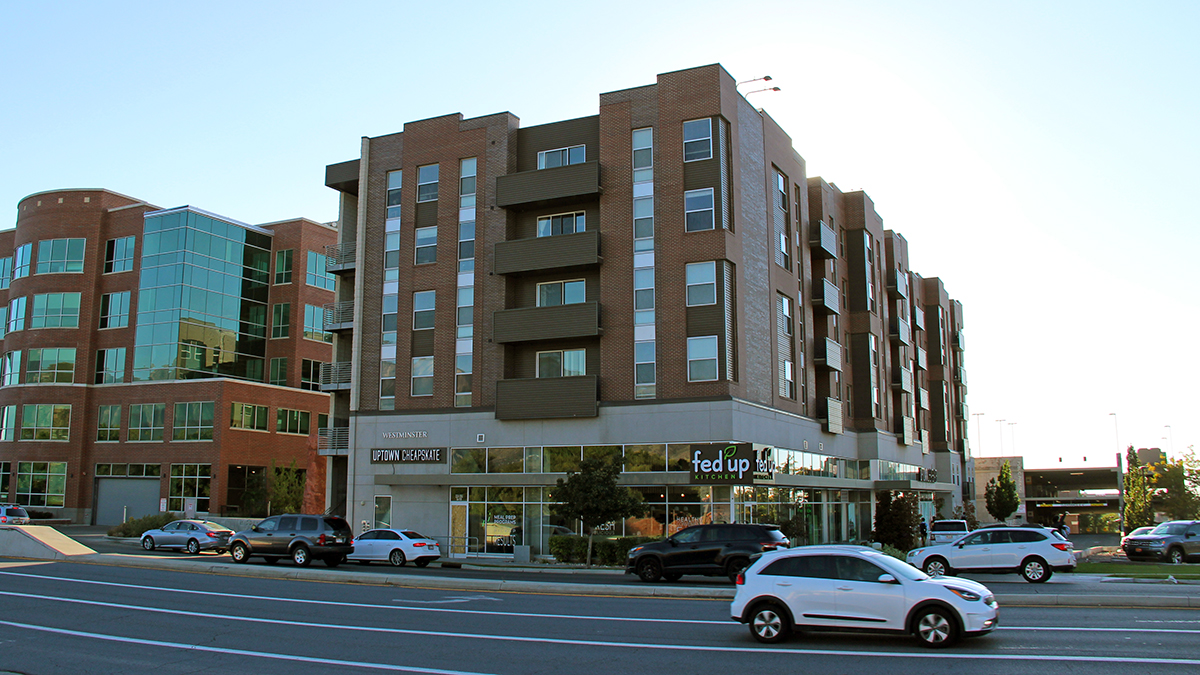Quick on The Draw: UIT sets up Wi-Fi on tight schedule

The U signed a five-year sublease agreement with Westminster College for The Draw,
a 162-bed apartment building located at 2120 South and 1300 East, on July 1.
Getting internet set up at The Draw happened so quickly that Comcast plans to use it internally as a case study for building more agility into their processes, according to Mike Ekstrom, director for Communications Infrastructure in the Chief Technology Officer organization.
“With the supply chain issues we anticipated, a turnaround this fast on a project of this size is basically unheard of,” Ekstrom said.
The University of Utah entered into a five-year sublease agreement with Westminster College on July 1 for use of The Draw, a 162-bed apartment building located at 2120 South and 1300 East in Sugar House’s Premier Plaza. Housing & Residential Education (HRE), which operates and maintains the property, started to offer contracts to students on July 5, the first day UIT staff members were cleared to survey the building.
What typically would have been a 140-day turnaround for internet provider Comcast was completed in 36 business days, excluding holidays and weekends, according to Bryan Morris, IT supervisor for the UIT’s Account Executives and University Television teams.
Morris explained the urgency — that fall semester was to begin in a matter of weeks — to Duskie Kakavas, Xfinity on Campus account manager, and Steven Taglialavore and Jonathan Forsythe, Comcast technical sales engineers. They relayed the information to Dustin Smith, Comcast senior director of business development. “After [Smith] heard that, he said, ‘we’ll do whatever it takes to get this done.’”
“When that happened, it was like the floodgates opened up and we were able to get everything we needed preconfigured and out of their warehouse,” Morris said.
To guarantee wireless coverage in common areas such as the lobby before the main internet connection was live, UIT donated multiple AT&T 5G-enabled mobile Wi-Fi hotspots for temporary coverage. Additional hotspots, Ekstrom said, were distributed throughout the building to provide connectivity for critical needs.
“Pretty quickly, we were able to stand up a wireless network that students could join and a temporary [service set identifier (SSID)] for them to use, which took some pressure off backend teams at Comcast to keep configuring wireless access points (APs) for each individual resident.”
Morris said Comcast staff and members of UIT’s Cable Plant team paired up to install the wireless APs starting with The Draw’s upper floors and working down, ultimately “knocking out the building in two-and-a-half hours, which is just amazing.”
“The guys all had great attitudes, and everybody was home by 5 p.m., which is a good thing,” he said.
Before they could do that, however, HRE staff contacted students who had already moved in, informing them of the AP installations, and coordinating times for the installers to complete their work.
“The key to making all of this happen is the communication HRE had with the students,” Morris said. “Kudos to them.”
To construct the network, Ekstrom said, UIT and Comcast had to start from scratch. All previously used network equipment had been removed prior to the U taking over the lease. This required Comcast to install a new 10Gb circuit and design and install new network infrastructure, switches, and wireless APs. Network switches are devices that route all information from the customer devices through Wi-Fi and data cables. Because of the new design, each resident in The Draw is guaranteed a minimum of 300Mb of wireless bandwidth and 1Gb of wired bandwidth.
UIT’s Network Services team, meanwhile, stepped up in a couple critical ways around IT security. A team led by Senior Network Engineer Ken Kizer set up a virtual private network (VPN) to run security equipment for the facility. The VPN established an Information Security Office (ISO)-approved encrypted end-to-end network based on Palo Alto Networks VPN technology.
The only wireless AP installation work that remains, Morris said, is in conference room spaces, which are currently used as an inventory and storage space.
“The entire project has been a lot of work, but it’s all worth it,” Morris said. “I’m hearing a lot of positive reviews now.”
Abraham Kololli, director for Network Services, agreed.
“It’s been a tremendous team effort, and we’re grateful to everyone who helped us get The Draw up and running,” Kololli said.
Node 4
Our monthly newsletter includes news from UIT and other campus/ University of Utah Health IT organizations, features about UIT employees, IT governance news, and various announcements and updates.
